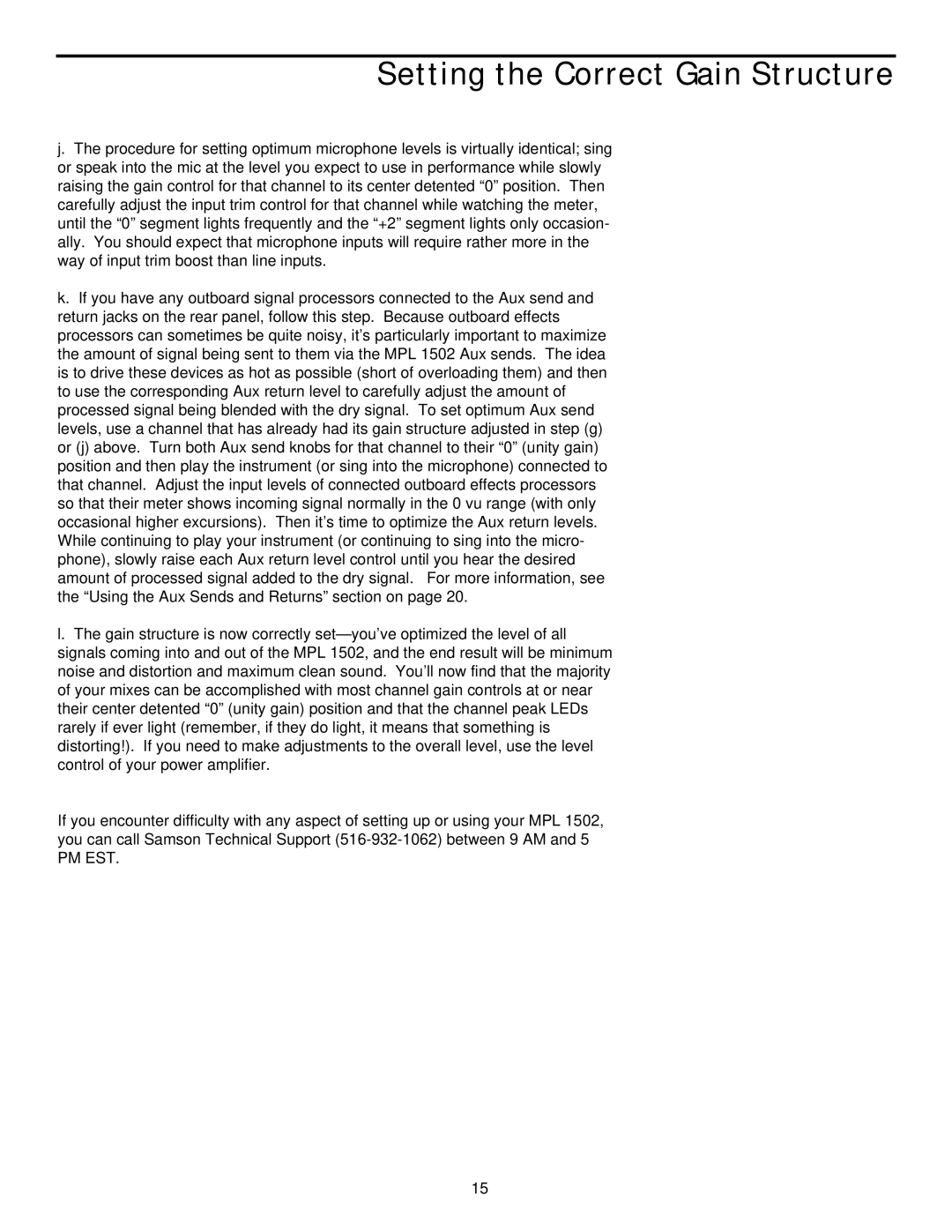Setting the Correct Gain Structure
j.The procedure for setting optimum microphone levels is virtually identical; sing or speak into the mic at the level you expect to use in performance while slowly raising the gain control for that channel to its center detented “0” position. Then carefully adjust the input trim control for that channel while watching the meter, until the “0” segment lights frequently and the “+2” segment lights only occasion- ally. You should expect that microphone inputs will require rather more in the way of input trim boost than line inputs.
k.If you have any outboard signal processors connected to the Aux send and return jacks on the rear panel, follow this step. Because outboard effects processors can sometimes be quite noisy, it’s particularly important to maximize the amount of signal being sent to them via the MPL 1502 Aux sends. The idea is to drive these devices as hot as possible (short of overloading them) and then to use the corresponding Aux return level to carefully adjust the amount of processed signal being blended with the dry signal. To set optimum Aux send levels, use a channel that has already had its gain structure adjusted in step (g) or (j) above. Turn both Aux send knobs for that channel to their “0” (unity gain) position and then play the instrument (or sing into the microphone) connected to that channel. Adjust the input levels of connected outboard effects processors so that their meter shows incoming signal normally in the 0 vu range (with only occasional higher excursions). Then it’s time to optimize the Aux return levels. While continuing to play your instrument (or continuing to sing into the micro- phone), slowly raise each Aux return level control until you hear the desired amount of processed signal added to the dry signal. For more information, see the “Using the Aux Sends and Returns” section on page 20.
l.The gain structure is now correctly set— you’ve optimized the level of all signals coming into and out of the MPL 1502, and the end result will be minimum noise and distortion and maximum clean sound. You’ll now find that the majority of your mixes can be accomplished with most channel gain controls at or near their center detented “0” (unity gain) position and that the channel peak LEDs rarely if ever light (remember, if they do light, it means that something is distorting!). If you need to make adjustments to the overall level, use the level control of your power amplifier.
If you encounter difficulty with any aspect of setting up or using your MPL 1502, you can call Samson Technical Support
PM EST.
15
